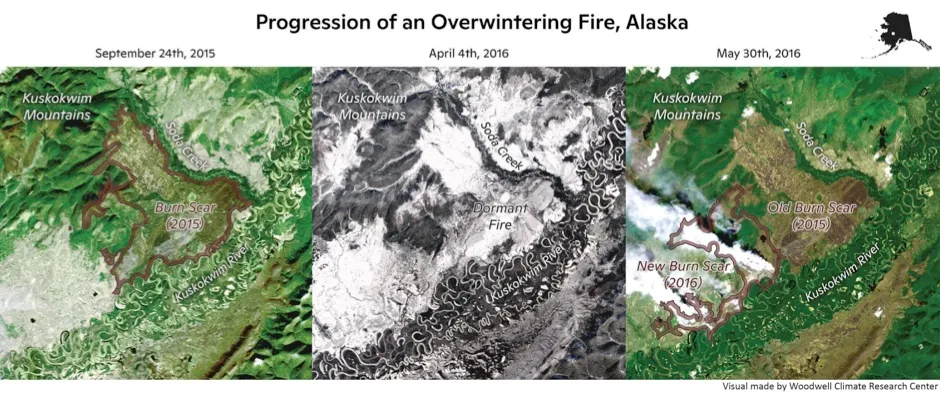'Zombie fires' – which continue to smoulder beneath the frozen ground through the winter and then flare up in the spring – may account for up to a third of the total burn area in the forests in the Arctic Circle, scientists believe.
Also known as overwintering fires, these wildfires have been a relatively rare phenomenon in the cold and wet winters of boreal forests across the vast expanses of Canada, Alaska, and Russia. But experts believe the numbers of zombie fires are now on the rise, due to a warming climate that allows them to burn deeper into the organic soil and continue smouldering over winter.
In the study, which was published in the journal Nature, the researchers said their work could help in the early detection and suppression of these fires.
Read more about wildfires:
“You could monitor the location of last year’s fires from planes or satellites and extinguish them when they are still small," said Sander Veraverbeke, an associate professor at Vrije Universiteit Amsterdam in the Netherlands, who took part in the study. “We will continue to research this scary but fascinating phenomenon in northern America and also in Siberia, in cooperation with local firefighters, because it seems that overwintering fires are here to stay.”
Last year, wildfires in the Arctic Circle broke the previous year’s carbon emissions record, emitting a record 244 megatonnes of carbon dioxide. Vast areas of boreal forests across Siberia, Alaska, Greenland, and Canada went up in smoke, thought to be fuelled by remnants of the previous year’s blazes.
“Boreal forest soils have a thick layer of organic material consisting of peat and decomposing spruce needles. These contain much more carbon than the trees above," said lead author Rebecca C Scholten, a PhD student at Vrije Universiteit Amsterdam. “With low oxygen levels under the snowpack, overwintering fires smoulder slowly, only to flare up again when the snow melts and dry conditions arrive in the spring.”

As part of the study, the researchers analysed satellite data from the Arctic Circle gathered between 2002 and 2018. They identified that zombie fires were responsible for nearly 1 per cent of the total burned area over the study period, but this varied in individual years and, in one year, was as high as 38 per cent. The researchers have developed an algorithm to identify zombie fires in some of the affected regions.
“Previously overwintering fires were reported as a rare freak phenomenon," said Scholten. "There are more overwintering fires after hot summers with many large and severe fires. In 2010 for example, they caused 22 per cent of the burned area in Alaska. Since 1975, summer temperatures in Alaska have been rising and so has burned area. Because of this, we expect that more overwintering fires will occur with climate warming.”
